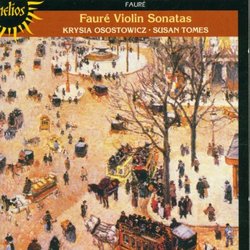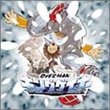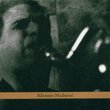| All Artists: Gabriel Faure, Krysia Osostowicz, Susan Tomes Title: Faure: Sonata for violin No1; Sonata for violin No2 Members Wishing: 0 Total Copies: 0 Label: Hyperion UK Release Date: 11/16/1999 Album Type: Import Genre: Classical Styles: Chamber Music, Historical Periods, Classical (c.1770-1830), Instruments, Strings Number of Discs: 1 SwapaCD Credits: 1 UPC: 034571150307 |
Search - Gabriel Faure, Krysia Osostowicz, Susan Tomes :: Faure: Sonata for violin No1; Sonata for violin No2
 | Gabriel Faure, Krysia Osostowicz, Susan Tomes Faure: Sonata for violin No1; Sonata for violin No2 Genre: Classical |
Larger Image |
CD DetailsSimilar CDs
|
CD ReviewsTwo different works from neglected composer Timmy | New York, Ny United States | 12/15/2001 (5 out of 5 stars) "Gabriel Faure is a composer who has long been ignored outside of France. This is quite odd, since he is probably the best composer France possessed between Berlioz and Debussy, outshining, in my opinion, Franck, Chausson, Saint-Saens, Gounod, d'Indy, Lalo, and many others. The reason for this is twofold: 1)he worked primarily in small forms, in contrast to the grand utterances of contemporaries Bruckner, Mahler, and Wagner, and 2) he was far more subtle in his romanticism, never letting himself take part in the bombastic sentimentality of his peers. With these two facts taken into account, Faure was a master in two respects, he was both a master of form as well as an deep and even austere musician. The two violin sonatas were composed by Faure in the opposite ends of his life, and they portray two very different sides of this wonderful composer. The first sonata, in the happy key of A-major, is quite lovely and very calm, despite occasional shades of unrest. It opens with a beautiful, leisurely 21 bar cantelina. This, as well as the second and fourth movements (the 2nd is in d-minor)are all in sonata form. The scherzo is Mendelsohnian, while the trio is a little Schumannesque. Despite these echoes of olde composers, however, Faure's personal melodic and harmonic style come through in every bar, noticeably in his use of modal scales. This is evident until the last movement, whose main theme oscillates around C-sharp in a whimsical but hypnotic manner. The second violin sonata (in e-minor), was written 40 years later when Faure was deaf, and is much more of a puzzle (it is similar in this respect to his late nocturnes). The melodies are less clear, the harmonies sharper, and there is far greater use of counterpoint. Despite the fact that it is harder to approach, however, this is probably the greater of the two violin sonatas. The first movement has three themes, which progress from e-minor to G-major (the first is menacing, the second is very chromatic an syncopated, and the third is more lyrical). The form he uses is extremely odd: he repeats the themes four times, the second is like a modified exposition and the second two are like varied recapitulations. (Wigmore, 1999) The A-major Andante is wonderfully serene, with a second theme that hovers between major and minor. The third movement, in E-major, is very graceful, until the first theme of the first movement returns. This gives way to the lyrical theme of the first movement, which ends the work in ecstasy. Although this work is difficult to approach, it is extremely rewarding. These two sonatas are very well played by Tomes and Osostowicz, and the program notes are very helpful in understanding the pieces." ALWAYS FAVORITES GEORGE RANNIE | DENVER, COLORADO United States | 04/10/2007 (5 out of 5 stars) "Faure's two violin Sonatas have been favorites of mine for a long time. Therefore, I own many recordings of the works. This recording on the budget label Helios certainly goes to the top of my favorite list. Although previously unknown to me Tomes and Osostowicz play these two life spanning works by Faure very beautifully! I love this recording. The sound is so rich and so very warm. Plus the performances are marvelous. I'm so very glad that I added it to my collection" Time WILL Tell... Giordano Bruno | Wherever I am, I am. | 11/17/2009 (5 out of 5 stars) "... or such at least has to be the hope of every underappreciated artist of any sort. In the case of Gabriel Faure, it seems to be true, since his music is becoming more widely perfomed and more enthusiastically received. I've been one of the under-appreciators myself; I'd hardly listened to a full CD or gone to a concert of Faure's music until very recently. The earlier review by 'Timmy' - an excellent discussion of this recording - exposes me as a johnny-come-lately.
Of the available recordings of these violin-piano sonatas that I've heard, this is the one I prefer, probably because of better recording technology. I'm so enraptured of the A-minor sonata that I went to a 'lunch concert' at the Berlin Philharmonie to hear it live, performed by Min Hee Lee, violin, and Thomas Hoppe, piano. That brings me to the one possibly provocative comment I want to make about this and other chamber music of the French impressionist composers - (My lunch concert also featured the Tzigane Konzertrhapsodie of Maurice Ravel) - which is that the balance of violin and piano is inevitably faulty. The piano on this CD too consistently dominates the violin; in live performance the imbalance was even more pronounced. Should we blame the composers for not properly matching the potentials of their two instruments, or shall we admit that the modern concert piano has evolved too far from the instrument Faure would have known to be paired with the unchanging violin? The problem isn't volume alone, by the way; it's also timbre, especially since younger players these days are eschewing the rapturous vibrato of the older generation. I'd love to hear the two Faure pieces performed on a more lightly-constructed piano, just as an experiment. I wouldn't want to guarantee the results, but some adjustment needs to be made, short of electrifying the fiddle." |



